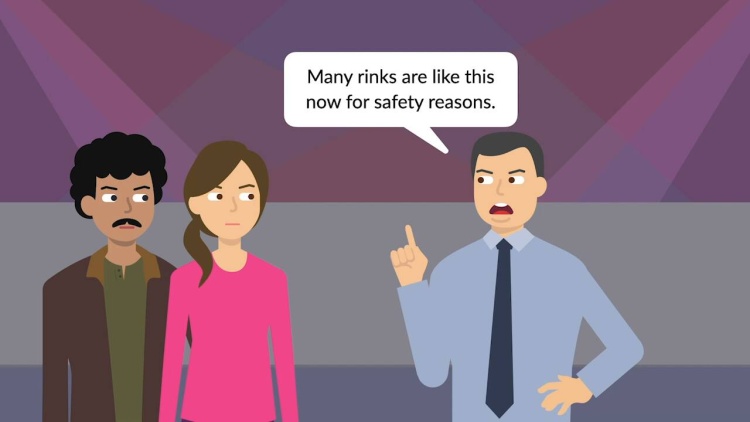Smollett v. Skayting Dev. Corp.
United States Court of Appeals for the Third Circuit
793 F.2d 547 (1986)

- Written by Denise McGimsey, JD
Facts
In February 1981, Helene Smollett and her husband, Leonard, (plaintiffs) attended a fundraiser at a skating rink owned by Skayting Development Corporation (Skayting) (defendant). The skating area was elevated three to five inches above the surrounding floorspace, which was carpeted. There were no guardrails. When Smollett and her husband inquired about the lack of guardrails, Skayting’s owner told them that new rinks were often built without them for safety reasons: to avoid the possibility of guardrails becoming loose and collapsing. Signs around the rink stated “skate at your own risk.” Smollett was an experienced skater; she did not take a lesson, which was offered at the fundraiser. The skating rink was not overcrowded, but many skaters were young and/or inexperienced. After skating for approximately 90 minutes, Smollett was on her last lap when a child fell in front of her. To avoid a collision, Smollett swerved off of the rink onto the carpet, breaking her wrist in the process. Smollett and her husband sued Skayting, which argued in its defense that Smollett assumed the risk of injury. A jury found in favor of Smollett but not her husband. The jury determined that Smollett was 50 percent at fault, thereby requiring a like reduction in her award pursuant to the applicable comparative-negligence statute. The trial judge denied Skayting’s motion for judgment notwithstanding the verdict or, in the alternative, for a new trial. Skayting appealed.
Rule of Law
Issue
Holding and Reasoning (Hunter, J.)
Dissent (Mansmann, J.)
What to do next…
Here's why 899,000 law students have relied on our case briefs:
- Written by law professors and practitioners, not other law students. 47,000 briefs, keyed to 994 casebooks. Top-notch customer support.
- The right amount of information, includes the facts, issues, rule of law, holding and reasoning, and any concurrences and dissents.
- Access in your classes, works on your mobile and tablet. Massive library of related video lessons and high quality multiple-choice questions.
- Easy to use, uniform format for every case brief. Written in plain English, not in legalese. Our briefs summarize and simplify; they don’t just repeat the court’s language.





